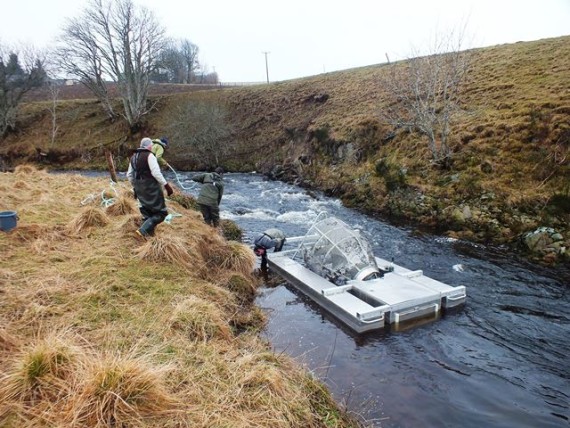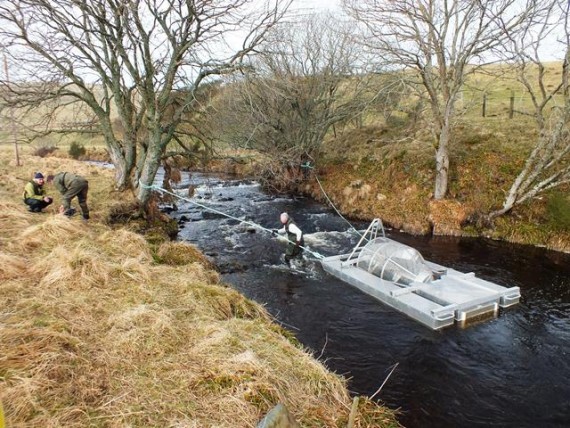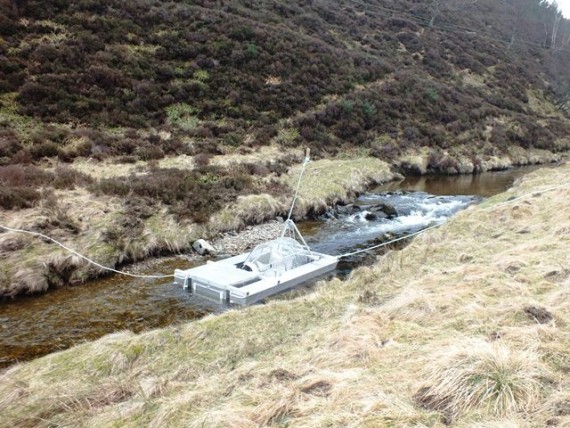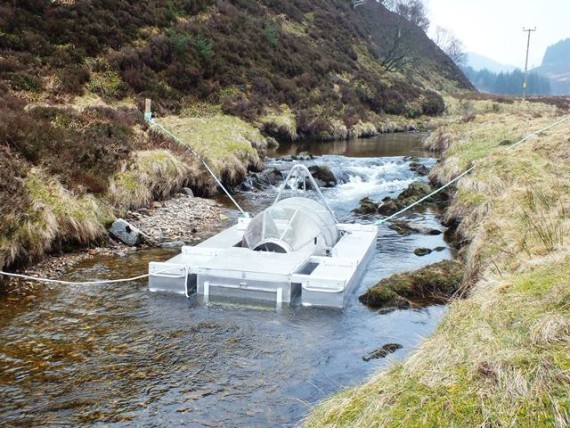We had a great morning up in the hills today finishing off the upper Dulnain electrofishing surveys. Once again we were lucky with the weather although there was cloud on the high tops which spoilt the view of the Cairngorms on the way back. The route out took us alongside the Gynack Burn. When you see the extent of the active erosion in the upper reaches it is easy to understand why there are often problems with gravel deposition at the road and railway bridges in Kingussie - the bedload coming down the Gynack in high spates must be enormous.
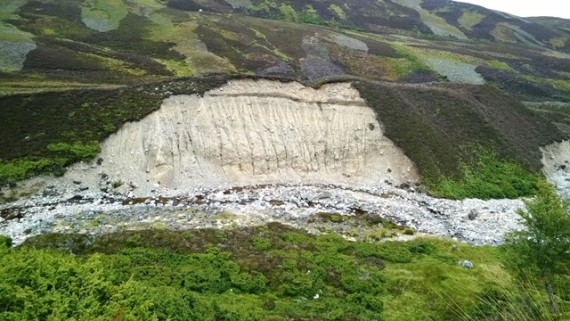
An example of one of the many eroding banks of the Gynack.
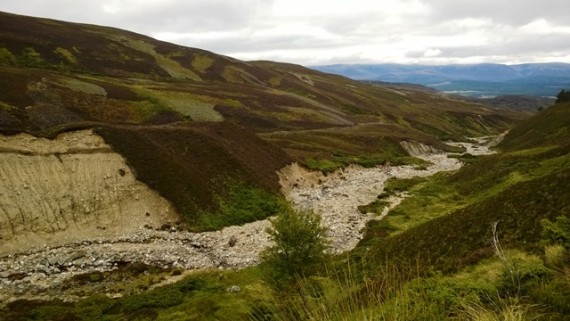
The wetted width of the Gynack is only about 6-7m at low flows but the bed width is up to 30m. This is an extremely active system, it must be a very hostile environment for fish life during big spates.
The hill road reaches 2400′ in altitude and near the top we had a really good view of an eagle.
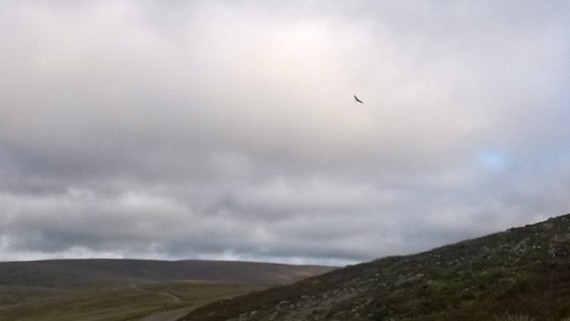
Golden eagles are impressive birds when you see them close up. The other wildlife certainly showed it plenty respect as there were packs of grouse flying in every direction. As the eagle approached a white hare broke cover just beside us. The eagle stooped but failed to pick it up - a great sight though. A little further along the road two more eagles appeared both harried by ravens. It’s always a great day when you see an eagle - even better three.
The survey sites in the upper Dulnain lie at 2030′ altitude making these some of the highest spawning salmon in Scotland. Up here the Dulnain is only about 4-5m wide and lacks the stream power seen in the Dulnain below. Consequently there are a range of sediment sizes including some nice spawning gravel.
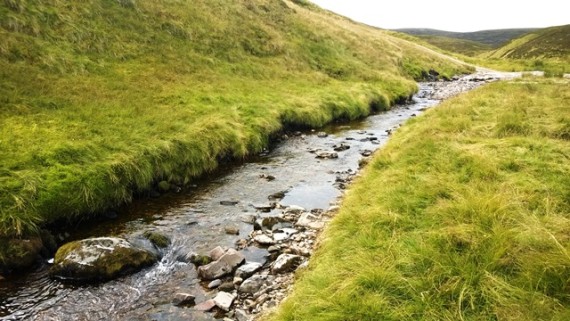
The upper Dulnain - a nice wee burn at this point. The conductivity was 38microsiemens/cm, quite high for the Dulnain suggesting that there may be some more favourable geology in the upper reaches. We noted heptagenid mayfly and blue-winged olive nymphs in the net signs that acidification is not an issue. Likewise the presence of a dipper at the site was a positive sign.
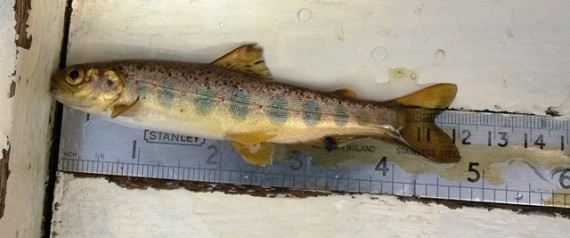
Salmon parr from upper Dulnain timed site. This one was 112mm so probably a two year old. There were also parr of 80mm and 123mm, likely to be one and three year old respectively. No fry however but our previous records for this area show that spawning salmon are not present this high up every year.
In the three minute timed survey we captured four salmon parr a few trout fry and 15 trout parr including one of almost 10″. All in all we were quite happy with the fish life we found.
The Dulnain is known to colour readily with peat stain during high flows and when you see the amount of exposed peat on the high ground it is easy to see why.
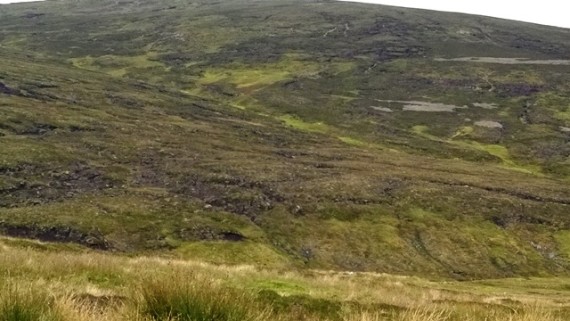
Exposed peat in the upper Dulnain catchment. There is debate about whether this level of exposed peat is a consequence of climate or land use. But for sure it is probably not a new issue, the Dulnain has long been known as a source of much of the peat stain which is a feature of the Spey in a wet summer.
On the road down this little chap sat beside the pickup for a minute or two - it probably reckoned it was safe from eagles if it stayed close by us!
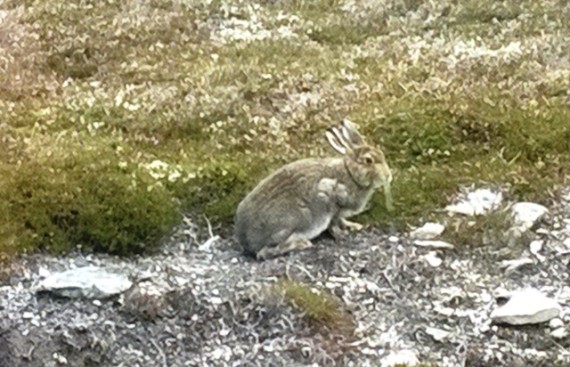
A young white hare in summer coat.
The post Up in the hills again appeared first on Spey Fishery Board.
Spey Fishery Board

